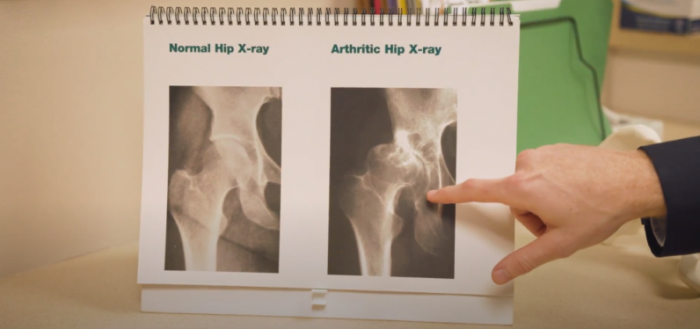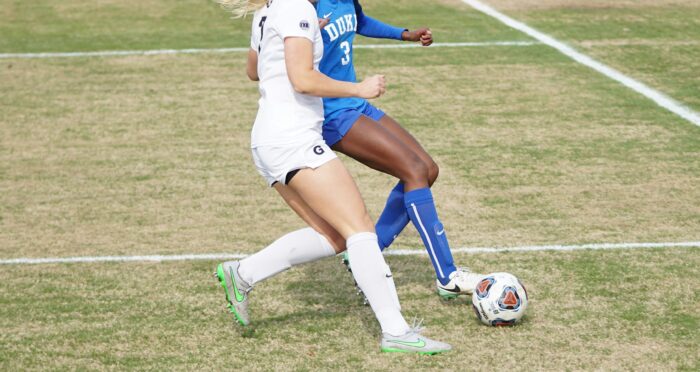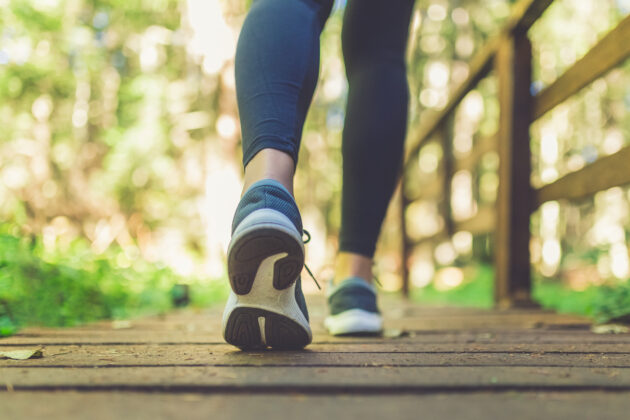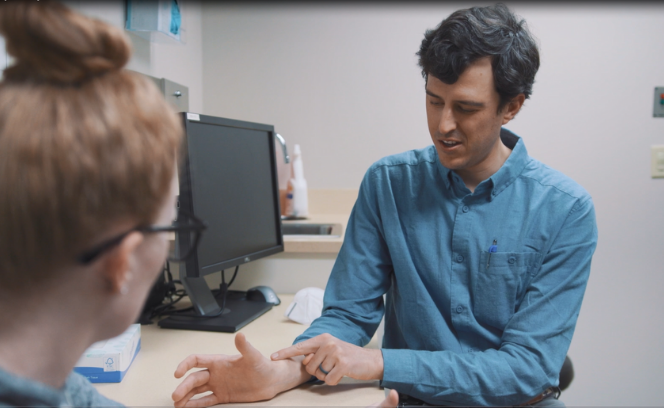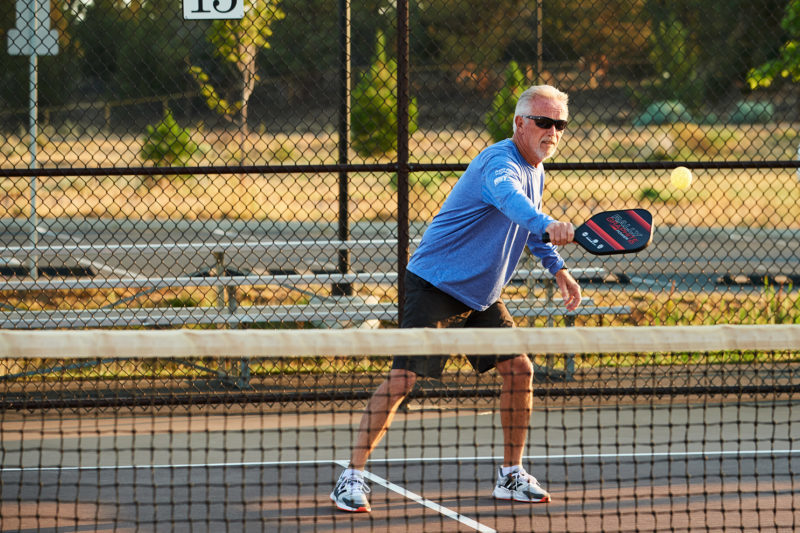
As the fastest-growing sport in America, pickleball has taken over tennis courts by storm, with lowered nets and repainted lines to accommodate the growing number of “picklers”. Pickler is the given name to those who make pickleball their game of choice, and the game is recruiting more and more players every day. But with the exhilaration of the game comes the risk of injuries, ranging from minor sprains to more severe fractures, posing challenges to players eager to stay on the court.
Common Injuries in Pickleball
- Ankle Sprain: Among the most prevalent injuries in pickleball is the ankle sprain, often resulting from sudden twists or turns on the court. The majority of all ankle sprains will heal without the need for surgery. Even a complete ligament tear will heal naturally if given the appropriate rest. Rest and protection of the ankle are the initial recommendations for a sprained ankle.
- Achilles Tendonitis: Achilles tendonitis is a common condition that occurs when the large tendon that runs down the back of your lower leg becomes irritated and inflamed. Tendons, unlike bone, can’t repair themselves. After tendons are torn, they create a “scar-like” attempt to repair themselves and that tissue does not have the same properties as the original tendon in terms of strength and elasticity.
- Hamstring or quadriceps muscle strain: Muscle strains are common in pickleball particularly among players who engage in strenuous movements without proper conditioning. Pain, swelling, and muscle spasms are all usual symptoms of a strain, but they can usually be treated at home. Rest, ice, compression, and elevation, as well as protection of the injury, are all recommended at-home treatments.
- Shoulder Impingement: Shoulder impingement, also known as rotator cuff tendonitis, occurs when the tendons of the rotator cuff become compressed against the shoulder blade. Often caused by overuse of the shoulder, this condition is common in athletes. Patients usually experience swelling and tenderness in the front of the shoulder, pain, and stiffness when raising the arm, loss of strength or range of motion, and difficulty doing everyday activities.
- Wrist fracture: It may not always be obvious that you have a wrist fracture. If pain in your wrist has not subsided within a day, this may be a sign of a fracture. It is important to see a doctor if pain persists in order to avoid further complications.
Some of these injuries will put your game on hold for a time, but others can be game-ending. If you’re considering adding pickleball to your activity routine, here is what you need to know to keep you on the court with your fellow picklers.
How to Avoid Pickleball Injuries
- Wear Proper Shoes: It cannot be stressed enough that proper footwear is very important. The best shoes to wear for pickleball are court shoes or tennis shoes. Choose shoes that are comfortable with grip and ankle support, and that have rubber soles with a tread pattern conducive to quick lateral movements. Also, keep in mind that your shoes have an expiration date. Pickleball shoes should be replaced after about 60 hours of play or every three or four months.
- Conditioning: Improving your strength and endurance will help injury prevention, and can improve your overall performance on the court. There are a variety of exercises you can do to improve in this area. For a full-body workout, choose exercises that include balance, mobility, flexibility, strength, endurance, and focus. Cross training with different activities will prepare your body for the variety of anaerobic movements pickleball requires.
In this video shoulder specialist, Dr. Scott Jacobson, reviews the best shoulder exercises and stretches for optimal health.
- Warm Up: Pickleball is no different than any other physical activity when it comes to the importance of a proper warm up. Start with dynamic stretching such as gentle twists, lunges, hip circles and bends to gently loosen the back, hips, arms, and legs. Listen to your body and pay special attention to any areas that seem particularly tight. Getting in a brief jog or a few short sprints up and down the court will help elevate your heart rate and prepare your body for action.
- Recovery Time: Many picklers play multiple times a week. Adequate recovery time is always suggested, especially if your body is feeling fatigued or you are experiencing a minor injury. A good rule of thumb is to practice R.I.C.E (rest, ice, compression, elevation). Be careful not to push past your limit and know when your body is telling you to take an extended rest period.
TREATMENT FOR PICKLEBALL INJURIES
Despite the best efforts to prevent injuries, pickleball players may occasionally experience musculoskeletal issues that require prompt and effective treatment. Whether it’s a minor strain or a more severe injury, seeking appropriate medical care is essential to facilitate optimal recovery and minimize long-term consequences. Here, we outline common treatments for pickleball-related injuries, ranging from conservative approaches to surgical interventions.
- Rest and Activity Modification: For minor injuries such as strains or sprains, the initial treatment often involves rest and activity modification to allow the affected tissues to heal. This may entail temporarily reducing or modifying pickleball play, avoiding activities that exacerbate pain, and incorporating gentle stretching and mobility exercises to promote healing and prevent stiffness.
- Physical Therapy: Physical therapy plays a crucial role in the rehabilitation process for pickleball injuries, helping to restore strength, flexibility, and function while addressing underlying biomechanical issues. A skilled physical therapist can develop personalized treatment plans tailored to the individual needs of the player, incorporating therapeutic exercises, manual techniques, and modalities such as ultrasound or electrical stimulation to expedite recovery and optimize outcomes.
- Bracing and Supportive Devices: In some cases, wearing supportive braces or devices may be beneficial for stabilizing injured joints and facilitating healing. Orthopedic braces, compression sleeves, or supportive taping techniques can provide added stability and protection during gameplay, reducing the risk of re-injury and allowing players to return to the court with confidence.
- Medications and Injections: Non-steroidal anti-inflammatory drugs (NSAIDs) such as ibuprofen or naproxen may be recommended to alleviate pain and inflammation associated with pickleball injuries. In certain circumstances, corticosteroid injections may be administered by your provider to target localized inflammation and provide temporary relief from symptoms, particularly in cases of acute tendonitis or bursitis.
- Surgical Intervention: In rare instances where conservative treatments fail to resolve persistent symptoms or when injuries are severe, surgical intervention may be warranted. Common surgical procedures for pickleball-related injuries may include tendon repairs, ligament reconstructions, or arthroscopic procedures to address structural damage within the joints. Orthopedic surgeons specializing in sports medicine can assess the extent of the injury and recommend the most appropriate surgical approach to restore function and mobility.
For personalized treatment plans tailored to individual injuries and health considerations, consult with an orthopedic specialist. By seeking timely medical care and guidance, pickleball players can optimize their recovery and minimize the risk of complications, ensuring a safe return to the court.
Stay informed about upcoming webinars and events, and gain valuable insights on leading a healthy, pain-free life from our experts by subscribing to our monthly newsletter. Click the button below to join!
